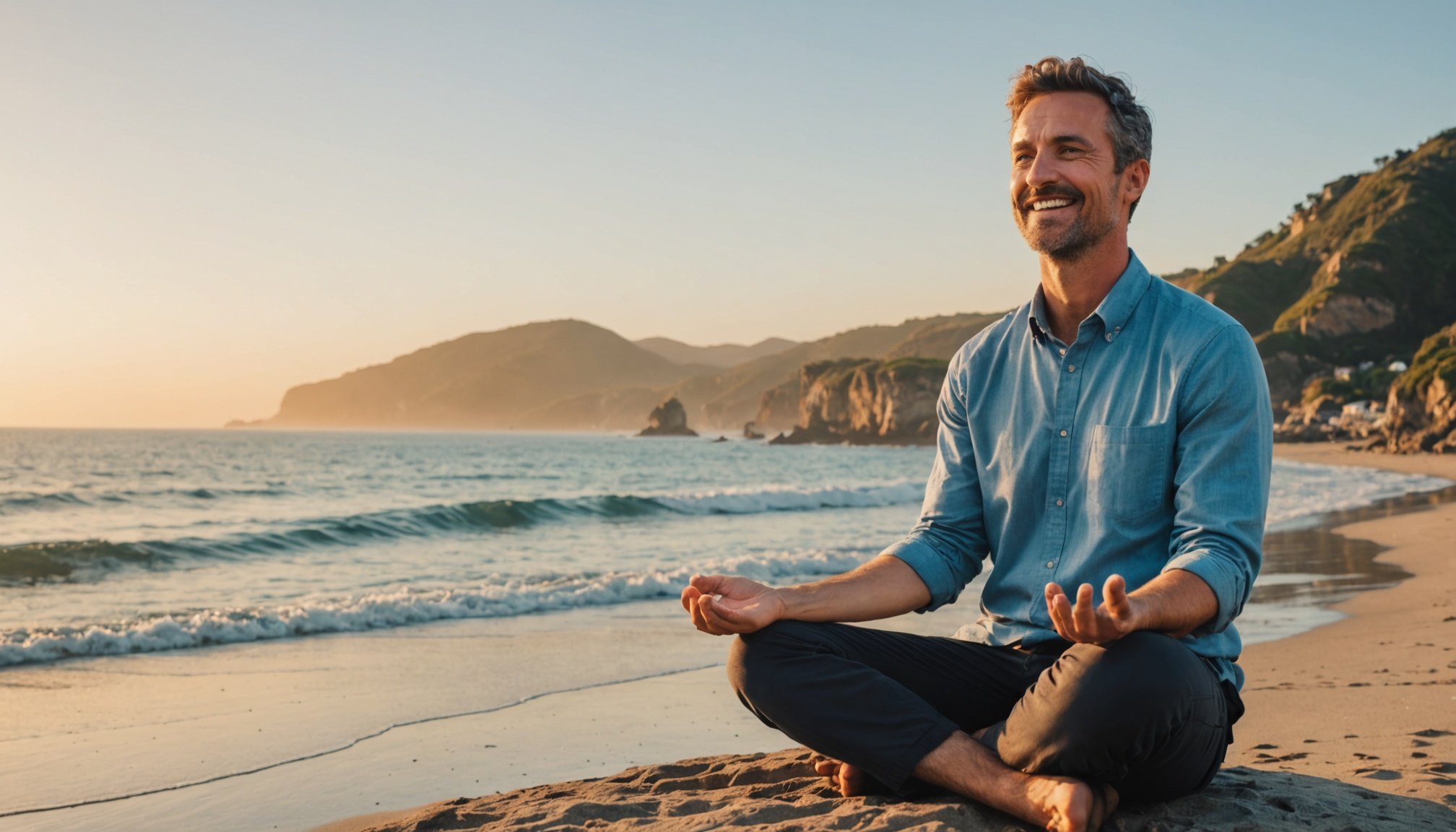Understanding Mindfulness and Its Impact on Happiness
Mindfulness is a practice rooted in ancient traditions, emphasising the importance of living in the present moment with full awareness and acceptance. At its core, mindfulness involves being attentive to one’s thoughts, feelings, and surroundings in a non-judgmental manner. This simple yet profound approach can bring significant improvements to one’s mental health and emotional well-being.
The Connection Between Mindfulness and Emotional Balance
Mindfulness teaches individuals to navigate their feelings with a sense of calm. Instead of reacting impulsively to stressors, one learns to observe their emotions. Such practice encourages emotional balance, reducing stress and enhancing overall mental health. By fostering this grounded emotional state, mindfulness often leads to improved relational dynamics and a more peaceful life experience.
Also read : Ultimate guide to protecting leather shoes in wet weather: pro maintenance tips you need!
Research Insights on Mindfulness and Happiness Improvement
Numerous studies have highlighted the positive impacts of mindfulness on happiness. Regular practice has been shown to reduce symptoms of anxiety and depression, leaving practitioners with a more profound sense of contentment. By promoting better emotional regulation and increasing self-awareness, mindfulness acts as a powerful tool for enhancing personal happiness and well-being. With continued practice, individuals may find themselves better equipped to navigate the complexities of modern life with grace and resilience.
Practical Mindfulness Techniques for Daily Application
Mindfulness can transform daily practices into moments of tranquility and clarity. Let’s explore some of the actionable strategies to enhance mindfulness in everyday life.
Topic to read : Revitalize your sleep oasis: create the perfect atmosphere for restful nights and radiant mornings
Breathing Exercises
Deep breathing is foundational to mindfulness, helping individuals remain present. Engage in deep breathing by inhaling slowly through your nose, holding for a count of four, and exhaling gently through your mouth. This practice helps diminish stress and promotes mental clarity. By incorporating deep breathing into routine activities, such as during breaks or before sleep, individuals can experience tranquility and improved focus.
Mindful Observation
Mindful observation involves attentively focusing on the environment around you. This practice enhances awareness and encourages a deeper connection with daily activities. To practice, start by selecting an object or scene and closely observing it without judgment. Notice details like texture, shapes, and colours. By making mindful observation a routine part of one’s day, such as during a walk or meal, individuals can cultivate a heightened sense of awareness and appreciation.
Gratitude Journaling
Gratitude amplifies mindfulness by fostering a positive outlook. Start a gratitude journal by setting aside a few moments each day to note down what you are thankful for. This could be as simple as enjoying a warm cup of coffee or a kind gesture from a colleague. Gratitude prompts, such as “What made me smile today?” can guide these reflections and enhance mindfulness, thereby nurturing a more positive and mindful mindset.
Transforming Your Daily Routine with Mindfulness
Incorporating mindfulness into your daily routine can lead to significant lifestyle changes, enhancing overall well-being and productivity. Starting with your morning routine, simple practices can set a positive tone for the day. Consider beginning each day with a few minutes of deep breathing or meditation. This approach allows you to cultivate awareness and establish a calm and focused mindset, which can be transformative.
Once the day is underway, mindful break strategies during work or study sessions can maintain a sense of balance and reduce stress. Techniques such as short breathing exercises, a mindful cup of tea, or a brief walk can re-centre your focus and revitalise your energy levels. These simple yet effective practices fit seamlessly into tight schedules, making them an accessible addition for everyone.
Finally, incorporating mindfulness in evening routines can promote relaxation and reflection. Activities like journaling about your day, engaging in yoga, or spending a few moments in gratitude practice help to unwind and process the day’s experiences. This evening mindfulness integration not only enhances mental clarity but also improves sleep quality, culminating in a more restful night. Embracing these mindfulness integration methods can truly transform your daily routine.
Tips for Maintaining a Positive Mindset
Setting Intentional Goals
A positive mindset is often rooted in setting intentional and mindful goals. Begin by crafting SMART goals—Specific, Measurable, Achievable, Relevant, and Time-bound—to ensure they align with mindfulness practices. This approach not only fosters mental resilience but also sets a clear path to follow. Regularly reassessing these targets allows for adjustment, ensuring they continue to contribute to sustained happiness and well-being. Think of your goals as a journey rather than a destination, requiring constant tweaking and dedication.
Overcoming Challenges
Practicing mindfulness can present numerous obstacles, such as distractions or negative thinking patterns. To combat these, develop strategies focused on identifying triggers and devising coping mechanisms. Practicing mindfulness techniques like meditation or deep breathing can enhance mental resilience, helping you turn challenges into growth opportunities. Mindfulness is about embracing imperfections and learning from setbacks.
Seeking Simplification
A crucial component in fostering a positive mindset is seeking simplification. Begin by identifying distractions that clutter your mind and space, redirecting focus from vital tasks. Embrace minimalism, which encourages a decluttered environment and mentality. Minimalist living is more than an aesthetic; it’s a pathway to clarity, allowing for enhanced focus and peace of mind. Creating a simplified environment ultimately supports a more aligned and mindful lifestyle.
Resources for Further Learning and Practice
For those eager to delve deeper into mindfulness, a wealth of mindfulness resources awaits. Begin with some compelling books renowned for their insightful perspectives. Titles such as “The Miracle of Mindfulness” by Thich Nhat Hanh and “Wherever You Go, There You Are” by Jon Kabat-Zinn provide foundational knowledge and actionable steps to incorporate mindfulness into everyday life.
Transitioning from reading to practice is crucial, and online courses offer structured pathways. Platforms like Coursera and Udemy host courses led by experts like Jack Kornfield, providing guided meditation techniques suitable for both beginners and seasoned practitioners. These online courses not only broaden understanding but also involve participants in workshops for hands-on experience.
In today’s digital age, apps and tools enhance the mindfulness journey. Consider using apps like Headspace and Calm. They deliver short, guided meditations that fit seamlessly into busy schedules, allowing for integration of mindfulness into daily routines. The accessibility of these tools supports ongoing practice and fosters consistency in mindfulness habits.
Utilizing a variety of resources enriches the mindfulness experience, offering both theoretical knowledge and practical application through diverse formats.













